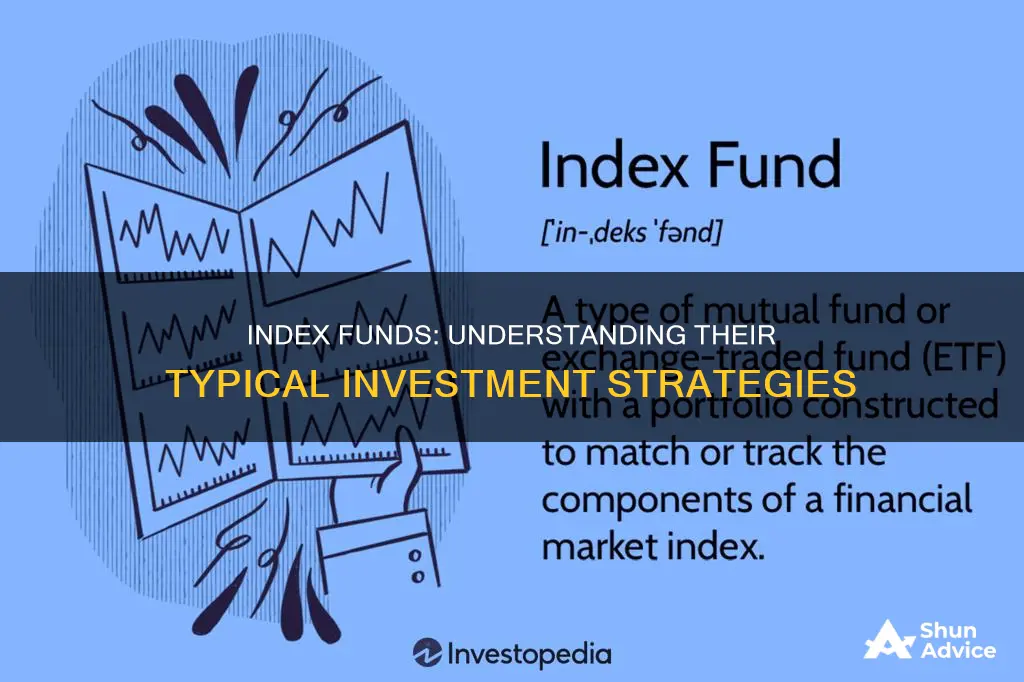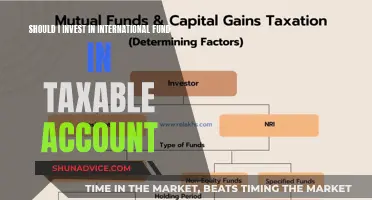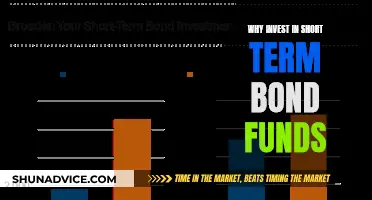
Index funds are a type of investment fund that tracks the performance of a market index, such as the S&P 500, by holding a selection of stocks or bonds that mirror the index's composition. These funds are typically passively managed, meaning they aim to replicate the performance of their chosen index rather than actively selecting investments. This passive approach often results in lower fees for investors.
Index funds can be structured as either mutual funds or exchange-traded funds (ETFs). Mutual funds are typically bought and sold directly from the fund company, while ETFs are traded on exchanges like individual stocks.
There are several types of index funds, including broad market index funds, market cap index funds, equal weight index funds, fixed-income/debt index funds, sector-based index funds, international index funds, and socially responsible index funds. Each type of index fund offers investors a different level of diversification and exposure to specific markets or sectors.
| Characteristics | Values |
|---|---|
| Type of fund | Mutual fund or exchange-traded fund (ETF) |
| Investment strategy | Passive |
| Investment aim | To replicate the performance of a designated index |
| Management | Not actively managed |
| Costs | Low fees and expense ratios |
| Risk | Low risk due to high diversification |
| Returns | Generally strong long-term returns |
| Taxes | Tax-efficient |
What You'll Learn

Broad market index funds
Examples of Broad Market Index Funds
- Vanguard Total Stock Market ETF (VTI): This fund tracks the CRSP US Total Market Index and provides exposure to a diverse range of stocks across large-, mid-, and small-cap companies, as well as growth and value investing styles.
- Schwab US Broad Market ETF (SCHB): This fund follows the Dow Jones US Broad Stock Market Index and includes the 2,500 largest publicly traded companies, offering broad market coverage.
- Vanguard Total Bond Market ETF (BND): This fund offers broad exposure to the US taxable, investment-grade bond market, excluding inflation-protected and municipal bonds.
Benefits of Broad Market Index Funds
Considerations for Broad Market Index Funds
While broad market index funds offer diversification and low fees, it's important to remember that they rise and fall with the underlying market. If the market experiences a downturn, these funds will also decline in value. Additionally, the broad nature of these funds may limit the potential for higher returns, as they may include underperforming securities. Therefore, it's essential to carefully consider your investment goals and conduct thorough research before investing in broad market index funds.
Maharlika Investment Fund: A Sovereign Wealth Fund for the Philippines
You may want to see also

Market cap index funds
There are three main types of market cap funds:
Small-Cap Funds
Small-cap funds typically include companies with market capitalisations of less than $2 billion. These funds invest in smaller companies that are often in the early stages of their business operations and are presumed to have significant growth potential. However, small-cap companies are less financially stable and established than larger companies, so small-cap funds can be volatile and may generate negative returns during market instability.
Mid-Cap Funds
Mid-cap funds invest in companies with market capitalisations ranging from $2 billion to $10 billion. These companies share some growth characteristics with small-cap companies but are generally less risky as they are larger and more established. Mid-cap funds may offer superior returns without the same level of risk as small-cap funds.
Large-Cap Funds
Large-cap funds comprise companies with market capitalisations of $10 billion or more, often referred to as the "big fish" of Wall Street. Due to their size, large-cap funds often imitate benchmarks like the S&P 500 or SP-100. These funds are suitable for investors with long-term holding periods who are seeking steady returns and income with lower risk.
When choosing a market cap fund, it's important to consider factors such as long-run performance, expense ratios, trading costs, fund options, and convenience. Additionally, understanding the potential returns and risks associated with different market capitalisation tiers is crucial for making informed investment decisions.
Key Factors for Investors to Consider in Mutual Funds
You may want to see also

Equal weight index funds
Index funds are a type of mutual or exchange-traded fund (ETF) that tracks the performance of a market index, such as the S&P 500, by holding the same stocks or bonds or a representative sample of them. They are defined as investments that mirror the performance of benchmarks like the S&P 500 by mimicking their makeup.
The main advantage of equal weight index funds is that they provide investors with a more diversified portfolio. By allocating a fixed percentage of the portfolio to each stock, equal weight index funds reduce the risk of any one stock dominating the fund's performance. This can help to minimise the impact of a single stock's poor performance on the overall portfolio.
Another advantage of equal weight index funds is that they can provide investors with exposure to smaller companies that may be overlooked by traditional index funds. Traditional index funds tend to allocate a larger percentage of their portfolios to larger companies with higher market capitalisations. Equal weight index funds, on the other hand, give smaller companies the same weight as larger ones, which can provide investors with a more balanced portfolio.
However, equal weight index funds also have some disadvantages. One disadvantage is that they can be more volatile than traditional index funds. This is because equal weight index funds are more heavily weighted towards smaller companies, which tend to be more volatile than larger, more established companies. Another disadvantage is that equal weight index funds may have higher expenses than traditional index funds due to the need to frequently rebalance the portfolio to maintain the equal weightings.
Overall, equal weight index funds can be a good option for investors seeking a more diversified portfolio and exposure to smaller companies. However, it is important for investors to carefully consider the potential risks and expenses associated with these funds before investing.
Bond Funds: Where to Invest Now?
You may want to see also

Fixed income/debt index funds
Fixed-income index funds are a type of investment fund that tracks an index comprising long-term debt papers. These funds are typically made up of securities such as government and corporate bonds, which are held until maturity, and fund managers do not actively trade the papers. Fixed-income index funds offer investors a steady stream of income with lower risk and relatively low volatility when compared to stocks. The funds provide access to a diverse range of bonds with different maturities, helping to minimize default risk.
Fixed-income index funds are ideal for conservative investors seeking a diversified portfolio. The funds offer a simple and low-cost way to gain exposure to the bond market, making them attractive to beginners and expert investors alike. The funds are passively managed, resulting in lower fees than actively managed funds.
When investing in fixed-income index funds, it is important to consider the fund's expense ratio, long-run performance, trading costs, and fund options. Additionally, investors should be aware of the inherent lack of flexibility in these funds due to their design to mirror a specific market.
Some popular fixed-income index funds include the Vanguard Total Bond Market Index Fund Admiral Shares (VBTLX), Schwab U.S. Aggregate Bond Index Fund (SWAGX), and Fidelity U.S. Bond Index Fund (FXNAX). These funds offer broad exposure to the bond market, have low expense ratios, and are backed by reputable fund families.
Index Funds: How Much Should You Invest?
You may want to see also

Sector-based index funds
There are several benefits to investing in sector-based index funds. Firstly, they offer broad exposure and diversification within a specific sector. This means that investors can gain access to a wide range of companies within a particular industry, reducing the risk associated with investing in individual stocks. Secondly, sector-based index funds are often more tax-efficient than actively managed funds because they tend to buy and sell holdings less frequently, resulting in fewer capital gains distributions.
However, there are also drawbacks to consider. Sector-based index funds lack flexibility as they are designed to mirror a specific sector. This means that they cannot pivot away from a particular sector if it underperforms. Additionally, they may invest in overvalued or weak companies within a sector, as they automatically include all the securities in an index.
When investing in sector-based index funds, it is generally advised to allocate only a small portion of your investment portfolio to these funds due to their volatility. They can be used as a satellite investment to complement a core holding, such as a diversified index fund or a blue-chip company.
Choosing the Right Brokerage: Investment Funds Explained
You may want to see also
Frequently asked questions
Index funds are a type of mutual fund or exchange-traded fund (ETF) that tracks the performance of a market index, such as the S&P 500, by holding the same stocks or bonds or a representative sample of them.
There are various types of index funds available, including broad market index funds, market cap index funds, equal weight index funds, fixed-income/debt index funds, sector-based index funds, international index funds, and socially responsible index funds.
Index funds have consistently outperformed other types of funds in terms of total return. They have lower management fees, lower transaction costs, and generate less taxable income. They are also highly diversified, reducing overall risk.
One drawback of index funds is that they rise and fall with their corresponding index, so they are vulnerable to market downturns. They may also be dragged down by underperforming stocks in the index, and they lack the flexibility to take advantage of market opportunities.







